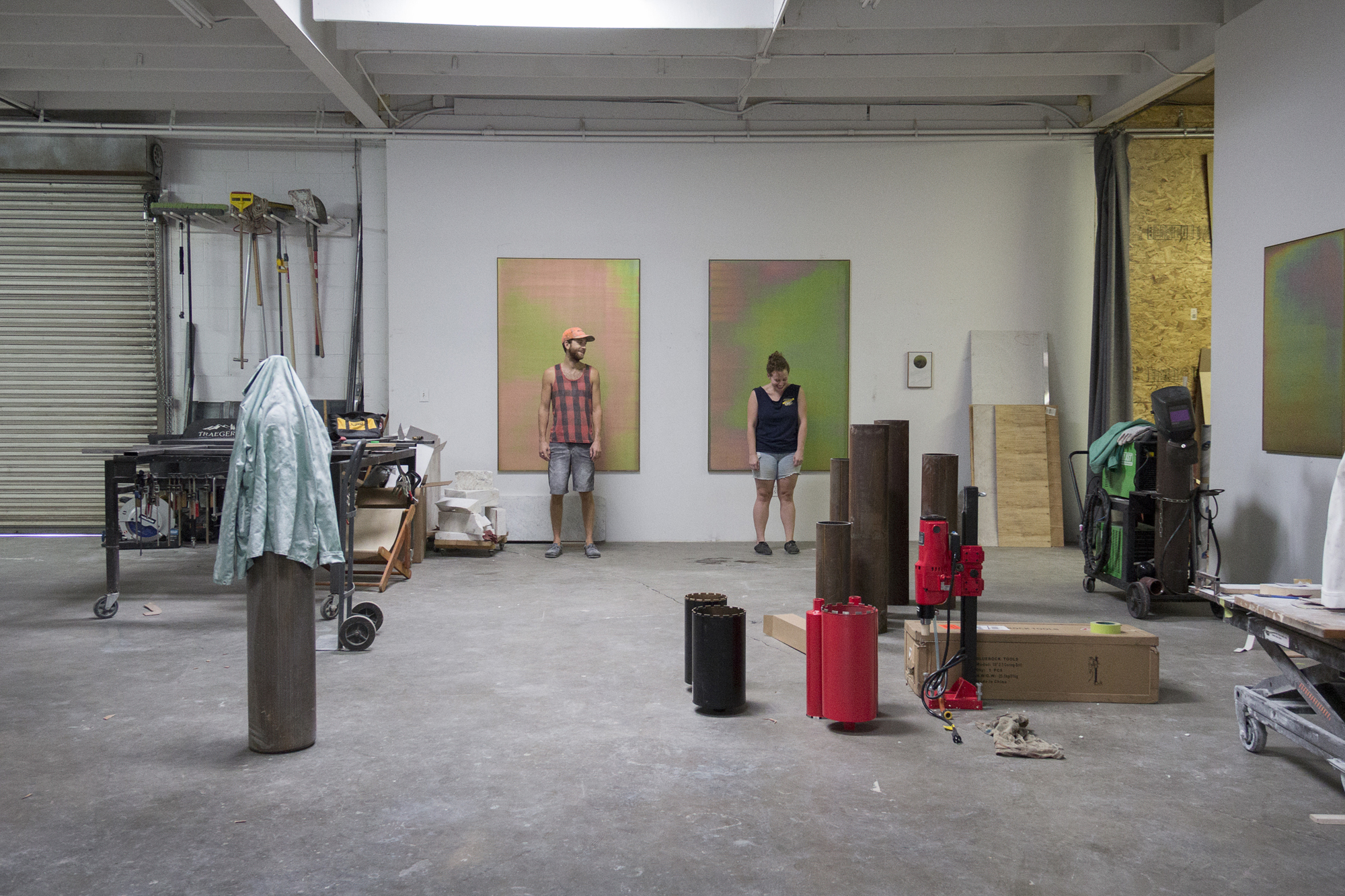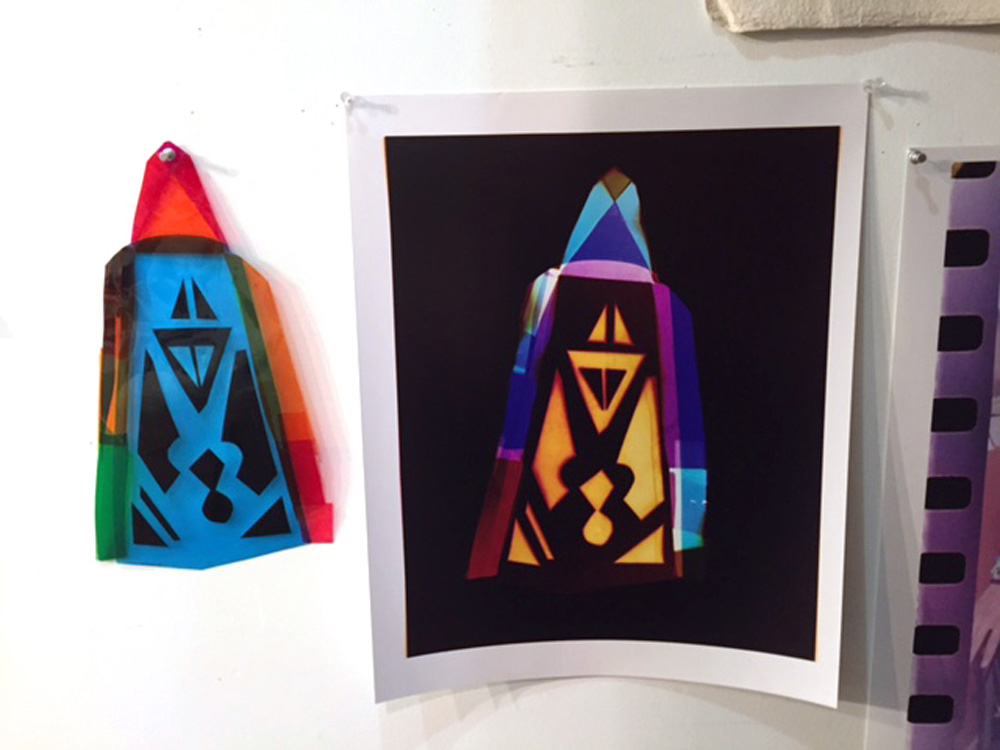Published in Art21 Magazine, March 2017
Installation view, Serialities, Hauser & Wirth New York, 2017. Image courtesy of the author.
By definition, objectivity defies romanticism. Despite this, curators and art historians have referred to the German photographer August Sander as an “objective romantic”. A selection of his portraits are featured as the heart of Serialities, a group exhibition currently on view at Hauser & Wirth’s new downtown location, on West 22nd Street in New York, that explores the conceptual use of repetition and seriality. The works are from the artist’s monumental project, People of the 20th Century, an exhaustive archive encompassing more than six hundred photographs taken between 1910 and the early 1950s.
Sander’s aim was to create a collective portrait of the German people, documenting all walks of life. in the course of his career, he established an unparalleled visual record of social stratification during a period of profound conflict—spanning the time from World War I to the rise and fall of the Nazi regime. Portraits were classified by Sander’s categories of professional or social criteria: “The Farmer,” “The Skilled Tradesman,” “The Woman,” “Classes and Professions,” “The Artists,” “The City,” and “The Last People.” The press release for Serialities cites Sander’s “fascination with visual cataloging, taxonomies, and the implicit politics of connecting past and present.”
Installation view, Serialities, Hauser & Wirth New York, 2017. Image courtesy of the author.
The August Sander Foundation promotes a compassionate undertone in the artist’s work, referring to his collection of portraits as an “equal and humanistic group” with romantic aims:
Despite reality being used as an elementary tool in photography, this does not mean that the reality depicted is what is represented by photography. Rather, the use of illustrations is an instrument which can convince us of the impossible being possible. It activates our ability to dream or to change our perception. ...By focusing on the individual person as a reference rather than the class status, gender or health, Sander has created a view of the world which we are still striving to fulfill.
In the front gallery of the exhibition, there is an equalizing effect conveyed by the series of thirty-six portraits, photographed by Sanders between 1911 and 1932. Installed in six sections, each featuring six images, there are simple distinctions made: women on the left side, men on the right. A portrait of a country bride with a crown of wildflowers hangs alongside that of a poised woman wearing a blazer and styled waves. There are obvious distinctions, yet the treatment of each sitter feels consistent in Sander’s documentary approach. It is the subsequent classification of the portraits that threatens their objectivity and creates a more conflicted document of their time. The Foundation has an extensive online resource for exploring the portfolios within People of the 20th Century; he categories reveal clearly subjective interpretations. The greatest concentration of portraits of women are relegated to a separate portfolio, despite the fact that “The Woman in Practical and Intellectual Occupation” group could easily have been integrated into the “Classes and Professions” category with their male counterparts. “The Last People” categorization is a sad indictment of the mentally ill and disabled.
Installation view, Serialities, Hauser & Wirth New York, 2017. Image courtesy of the author.
These points are not meant to criticize the work; rather, they are acknowledgments of the fact that despite the consistent treatment of his subjects, Sander’s world does not translate as equal or humanistically balanced. Its inherent subjectivity is what gives it weight as an invaluable document of its time. The collection serves as photographic witness to a period when the Nazi party was gaining power, identifying categories that would later be persecuted. Sander’s work and personal life would also be greatly affected; many of his photographic plates were ruined and his studio destroyed in a 1944 bombing raid. Only after his death was eople of the 20th Century ealized as a published archive.
Years ago, I first studied August Sander’s oeuvre as part of an introductory class on the history of photography. At the time, I was a young art student, swaddled by San Francisco’s Leftist politics during the comparatively calm political climate of the George W. Bush presidency. But as I now revisit Sander’s work, I also recognize my own shifting subjectivity based on personal experience and a changing worldview. As we navigate our current time of political unrest and social upheaval, the concept of “implicit politics in connecting past and present” mentioned in the exhibition’s press release takes on a new dimension as I interpret these portraits and their categorizations with a more critical viewpoint. Sander’s work was not political by design, but it has become political by proxy.
August Sander, Painter’s Wife (Helene Abelen), c. 1926. Image courtesy of the August Sander Foundation.
The slow and methodical approach of Sander’s portraits appears in stark contrast to the contemporary flood of digital pictures and videos characterized by the ability for anyone to document anything at a moment’s notice. In a 2015 article, David Joselit explores the idea of the material witness in the case of Eric Garner and argues against the ideological promises of representation. The fallacy of the objective romantic returns as the harsh reality dawns that sometimes abundant documentation of blatant misconduct isn’t enough to convince a jury to convict the perpetrator.
In consideration of what the public needs now, reality is still an elementary tool in photography and Sander’s approach is still valuable in the form of an unwavering gaze focused on the individual. Yet this approach must be coupled with Joselit’s understanding that information is never pure. In one of the portraits featured in Sander’s collection, titled Painter’s Wife (Helene Abelen), a woman dressed in white harem pants paired with a button up shirt and tie prepares to strike a match as she holds a cigarette in her teeth. Her gaze is steady and fierce in a pose akin to a boxer in the ring. Taken in 1926 and filed under the subset of “The Elegant Woman” in Sander’s People of the 20th Century, his portrait illustrates a stance equally relevant in the present. A steady eye is the closest we can get to objectivity, fighting to document the truth of our time.


















